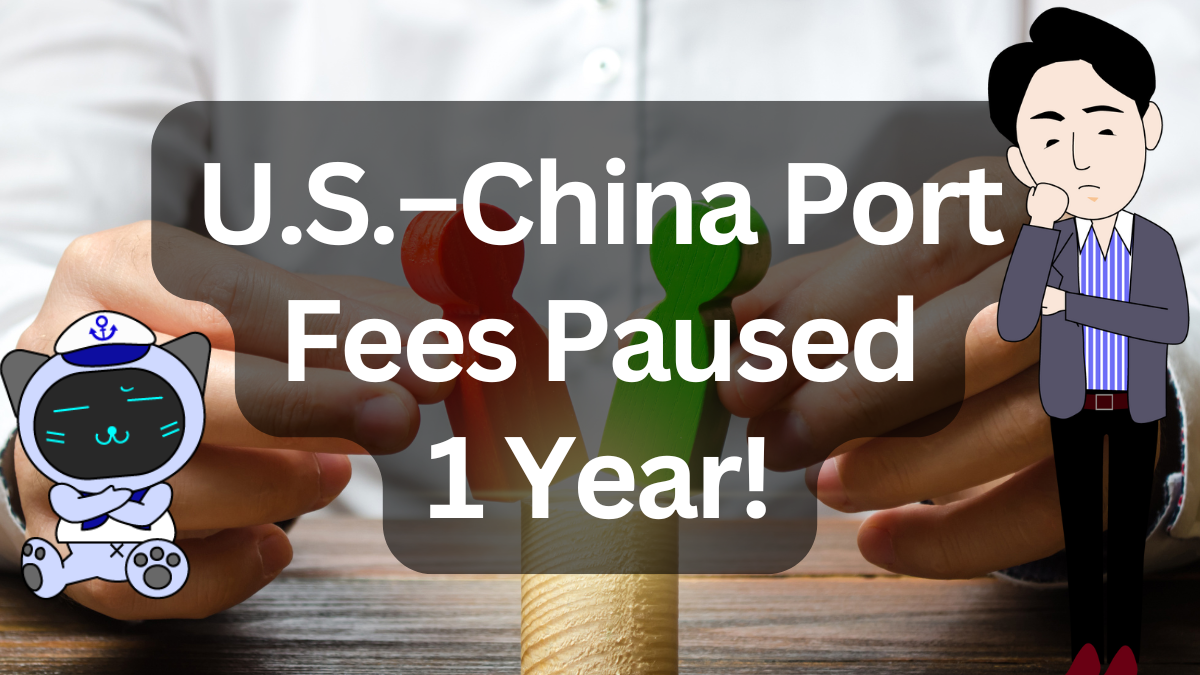Posted on: November 6, 2025 / Last updated: November 6, 2025
U.S. and China Suspend Port Entry Fees for One Year — A Step Toward Easing Tensions

According to the November 5 issue of Kaiji Shimbun, the United States will suspend port entry fees on Chinese-related vessels for one year.
The measure will take effect on November 10, 2025, marking a temporary halt to the tit-for-tat fee escalation between the two nations.
CONTENTS
Background: Escalation of Port Fees Between the U.S. and China
Since October 14, 2025, the U.S. has imposed port entry fees on vessels built in China or operated by Chinese shipping companies.
The U.S. Trade Representative (USTR) introduced this policy to support the revitalization of domestic shipbuilding, sending a strong message: “If you enter an American port, use American-built ships.”
In retaliation, China announced similar fees on U.S. ships and affiliated companies.
However, with the latest announcement, the U.S. decided to suspend the fees for one year, and China has also declared its intention to remove them.
Still, the exact date of China’s suspension remains unclear, leaving uncertainty in the timeline.
Bilateral Summit Becomes the Turning Point
Just before the announcement, the U.S.–China leaders’ summit took place in late October.
The handshake between President Trump and President Xi Jinping drew global attention, signaling a potential thaw in relations.
The suspension of port fees is seen as part of this diplomatic easing process.
However, port fees that have already been paid since October 14 have not been addressed, raising questions about refunds or adjustments.
This issue is expected to become a practical focus for both sides in the coming months.
Possible Motives: Inflation Control and Shipbuilding Strategy
This “one-year suspension” appears not merely a pause, but a strategic adjustment period for U.S. domestic policy.
The decision may reflect the Trump administration’s goals of curbing inflation and supporting the revival of the American shipbuilding industry.
At the same time, as the U.S. seeks to restructure its maritime and shipbuilding sectors, temporarily easing tensions with China could help stabilize trade.
This one-year window may serve as a “cooling-off period” to redesign maritime policy.
Key Points to Watch
- U.S. suspension starts November 10, 2025
- China’s withdrawal date remains unknown
- Refunds or adjustments for paid fees are uncertain
- Possible impact on global shipbuilding and trade policy
This port fee issue goes beyond operational costs—it connects directly to the revival of shipbuilding and the redefinition of global trade rules.
Freight forwarders and shippers should closely monitor the evolving U.S.–China maritime policies.












